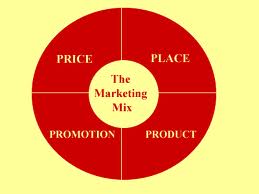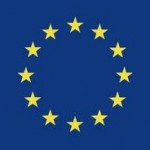
There are no arguments amongst special events industry researchers and practitioners that the success of special events depends on the level of effectiveness of marketing and overall management. However, the role of crisis management is greater in special events than a range of other businesses because special events are associated with unforeseen circumstances in a greater extend (Matthews, 2008). It has been stated that “crisis management starts with avoiding action, keeping your finger on the pulse so that as soon as the pace hots up – at the first signs of the beginning of a crisis slide – you can take pre-emptive action” (Armstrong, 2008, p.162). This article represents a brief literature review on the topic of crisis management in the management and marketing of special events and addresses the most important aspects of the issue on the basis of secondary data research. The majority of authors who have contributed to the research area in a significant way have offered their own version of definition of its main terms. Crisis management has been defined as “preparation for low-probability or unexpected events that could threaten an organisation’s viability, reputation, or profitability” (Pride and Ferrell, 2008, p.455). An alternative definition of crisis management is offered by Lamb et al (2008) in a way that it is “the coordinated effort to handle the effects of unfavourable publicity, ensuring fast and accurate communication in times of emergency” (Lamb et al, 2008, p.527). On the other hand, some authors (e.g., Bowdin et al, 2006, Glaesser, 2006, and Tong, 2010) have attempted to define the functions of crisis management and offered viewpoints like “crisis management as an institution refers to the group of persons who are responsible for crisis management activities. They are the dominant bearer of the functional crisis management” (Glaesser, 2006, p.21). The…

There are numerous event evaluation concepts and methods that have been suggested by authors. According to Allen (2002) economic performance of any event can be considered as a primary indicator of its success if analysed from the perspective of various stakeholders. The preference to economic performance of the event as the main success measure is also given by Silvers (2008), and Tum et al (2006). The following event evaluation measures according to types of events have been proposed by one of the respected scholars in events industry Getz (2000): Firstly, Economic Development and Tourism a) Market share of specific event or events sector in a specific region needs to be analysed. b) Economic impact of the event, including the level of employment opportunities for people c) Sustainability of events. Self-supporting aspect of events can be stated to be the foundation of this specific event success measure d) Competitive advantage of events compared to the events in different locations can also be stated as success measure e) Image improvement side of the event, together with the scale and the scope of publicity that was attracted by the event. f) Rate of habitation of the event. This measure includes assisting hotel and transportation business in the region, as well as assistance provided to local residents. 2. Community a) The intensity of political support the event was able pull off and the level of local attendance b) Willingness of attendants to pay for the event c) The level of volunteer support that the event was able to generate d) The accomplishment of the event in of developing the spirit of community and pride in various stakeholders 3. Art and Culture a) The accomplishment of the event in advertising and developing local talent b) The success the event was able to achieve in providing…

In the present marketplace, the customers are more informed than ever as they can reach out for the best offers available in the market, identify different alternatives by different companies, therefore, it can be said that they are the reasons for the best values to be created in the marketplace (Lancaster, Massingham and Ashford, 2002). Kotler and Kelly (2006) stated that Customer Perceived Value is the difference between the prospective customer’s evaluation of all the benefits and all the costs of an offering and the perceived alternatives. Customer Perceived Value is based on the difference between what the customer gets and what he/she gives for different possible choice. The creation of Customer Perceived Value The marketers usually create value increasing the value of the customer offering by some combination of raising functional or emotional benefits and/or reducing one or more various types of costs. Even if the same product is being offered by two different companies, if one of the companies provides better customer services, post sales service, training, on-time delivery and maintenance, the perceived value of the same product tends to increase because of the reliability of the selling company and their added values when selling the product. Moreover, the more perceived value is also given to the company with a better corporate image as it indicates that the company is reliable and trustworthy, as it is one of the key factors in deciding when purchasing a product. However, the companies also face complexities as consumers have varying degrees of loyalty to specific brands, stores and companies. As Kotler and Keller (2005) state that the key to generating to high customer loyalty is to deliver high customer values. Furthermore, high customer values can also be delivered by offering the customer more than just the basic product but also extra…
By John Dudovskiy
Category: Consumer Behaviour

A variable can be defined as “something that can be changed, such as a characteristic or value” (Cherry, 2011, online). There are various types of variables, but for this paper marketing variables can be divided into two groups: psychological and market related. Baker and Hart (2007) inform that psychological variables are the type of variables that are related to a process such as perception, motivation, personality, attitude, lifestyle etc. Each of these variables are complex on their own and are utilised by marketing professionals in order to achieve a desired outcome that is naturally to make a sale. At the same time it has been stated that “behavioural psychology ignores the complex mechanisms of the mind by dumping all the psychological variables into a ‘black box’” (Smith, 2003, p.84) The integral components of motivation as a psychological variable, according to Klein (2007), are needs, wants, and drive. If this concept is applied to furniture business it can be understood that furniture manufacturing and selling companies first attempt to arise a need for their products in the minds of perspective customers. Then the ‘need’ can be transformed into ‘want’ through the application of various marketing techniques. Consequently, an appeal to the ‘drive’ will be made by marketers through specific techniques, for instance indicating to the affordability of their products by introducing monthly instalment payment plans. For instance, in Habitat furniture stores in UK occasionally a member of staff offers a free glass of Champaign to customers upon entry to the store. Coupled with calming music or song, and motivating shopping environment this strategy often motivates customers to make a purchase from the store. Kozami (2002) links motivation to the theory of Hierarchy of Needs introduced by Abraham Maslow. According to the theory, the need of an individual is divided into five…
By John Dudovskiy
Category: Consumer Behaviour

Corporate Social Responsibility (CSR) has become one of the most important aspects of a business practice that companies cannot afford to ignore. It needs to be specified that “CSR is concerned with treating the stakeholders of the firm ethically or in a responsible manner” (Hopkins, 2007, p.15). It can be stated that the importance of CSR increases with the size of the company due to the fact that in large companies any CSR related issues will attract wider media coverage and accordingly will have greater implications. This article analyses one of the most important aspects of CSR, being responsible towards the natural environment of host country in case of BP Plc, a global oil and gas company based in London, UK. The article starts with the outline of the company, followed by the analysis of CSR issues BP is facing in host countries. Also measures required to be undertaken by BP in order to address CSR challenges effectively are described in the paper, as well as the limitations of acknowledged measures are acknowledged. BP Company Outline BP is an international oil and gas company that operates in more than 80 countries under two segments: exploration and production, and refining and marketing (Reuters, 2011, online) The company has more than 79,000 employees globally that are working on 22,100 retail sites, 14 wholly or partly owned refineries and producing 2,426 barrels of oil per day (BP at a Glance, 2011, online). Steffy (2010) informs about mergers and acquisitions engaged by BP with a range of companies especially highlighting the merger with Amoco in 1998, and the acquisition of Arco in 2000 and states that these events became factors contributing to the current size and state of the company. BP is engaged in CSR initiatives intensively, promoting the projects related to the renewable…

The importance of marketing has increased over the past several decades due to increasing rate of competition caused by globalisation, technological advancement, rising role of internet and other reasons. As a result, marketing has become an important aspect of the business for obtaining competitive advantage and therefore its main theories and principles are finding their wider applications. In other words, the necessity of marketing for businesses is confirmed by the fact that “businesses must sell products to survive and grow, and marketing activities help to sell their products” (Pride and Ferrell, 2008, p.16). This article critically analyses the importance of marketing in relation to the beverage industry in China through employing a range of marketing tools. Specifically the choice of marketing tools used to analyse beverage industry in China consist of marketing mix, PESTEL analysis and Porter’s Five Forces analysis. Marketing Mix Marketing mix can be defined as “a unique blend of product, place, promotion, and pricing strategies designed to produce mutually satisfying exchanges with a target market” (Lamb et al, 2008, p.44). In other words, effective strategies should be designed and implemented regarding all four components associated with a product or service – product, place, promotion, and pricing in order to ensure the sale of the product or service. This approach can be adopted by companies in beverage industry in China in order to ensure the success of the company in global level. A range of strategies are available managers in beverage industry in China can use to gain competitive edge regarding each component of the marketing mix. Product decisions China’s beverage industry managers can take in order to increase their market chare include the brand name of the beverage products, styling and safety of packaging, their expiry date etc. Marketing managers in beverage industry in China have…

Marketing mix is one of the most popular theoretical frameworks in marketing that has been used by companies in order to make marketing and other decisions in a more efficient manner. Companies have concentrated on various elements of marketing mix as a source of competitive edge according to the strategy adopted by senior level management in order to achieve long-term aims and objectives. The potential contribution of marketing in terms of obtaining competitive edge has been realised by management of many successful businesses therefore, the attention to this specific area of business practice has become greater than ever before (Egan, 2007). Accordingly, today most of the concepts associated with marketing such as marketing mix, product life-cycle, PEST and SWOT analysis, Porter’s Five forces, Value-Chain analysis and others attract more interest than ever before and these marketing concepts are finding their practical applications among increasing number of businesses. Marketing mix, otherwise known as 4Ps can be highlighted as one of the fundamental concepts in marketing and focuses on four aspects of the business practice: product, price, promotion and place (Klein, 2007). The practical application of marketing mix by companies varies according to their size, chosen business strategies, geographical location, competitive edge and a range of other factors. According to Kumar (2010), marketing mix is the terms used to describe the combination of methods employed by a business in order o achieve its objectives by marketing its products and services effectively to a specific target group. Bootwala et al (2009) mention the definition of marketing mix as offered by Philip Kotler according to which “marketing mix is a set of controllable variables and their levels that the firm uses to influence the target market” (Bootwala et al, 2009, p.3.1). Evolution of Marketing Mix Kitchen (2010) informs that the theory of marketing…

Marks & Spencer (M&S) is a UK based clothing and luxury food retail company that has been founded in 1884 by Michael Marks and Thomas Spencer. The company has over 76,000 employees in a global level, and deals with over 2000 suppliers (Annual Report and Financial Statement, 2010). “The global influence of the company stretches from Europe to Russia, the Middle East, India and Asia at present – taking advantage of 3 of 4 BRIC nation markets” (Bunston, 2008, p.3). M&S homeware and clothing products account for 49% of its total business, whereas the remaining 51% account for food products. With more than 600 stores throughout the UK, the flagship M&S store is located at London’s Marble Arch and possesses the selling space of around 170,000 square feet (Marks and Spencer Group PLC, 2008, online). From the date it was formed M&S was steadily growing, focusing on the quality of its products and offering value for money. The profitability of the company had peaked in the financial year of 1997/98, shortly after which the company found itself into deep financial troubles. The reasons were the increasing level of profit margin, the refusal of the company to accept credit cards, the principle of the company to deal only with British suppliers etc. Then the company went through massive changes that included the introduction of new ‘Per Una’ ranges of clothing, acceptance of credit cards, more focus on customer services, etc, as a result of which the company was able to recover some of its market share. The company has engaged in a range of Corporate Social Responsibility (CSR) initiatives as well, and ‘Plan A’ initiative can be highlighted separately as the most notable one. The project has been assigned a budget of 200 million GBP and has a range of ambitious objectives to be…

Each business entity operating within the European Union (EU) is bound to operate within the boundaries of legislation issued by the government of the home country of the business, as well as, the rules and regulations of the EU. The Treaty on the Functioning of the European Union (TFEU) “organises the functioning of the Union and determines the areas of, delimitation of, and arrangements for exercising its competences” (TFEU, p.4), this includes economic activities as well, and therefore, has a direct affect on activities of business entities operating within the union. This essay analyses activities that are prohibited by Article 101 of the TFEU and also explores some other related issues. Article 101 “applies to agreements between undertakings and declares these agreements void when they are found to restrict the competition” (Chalmers et al, 2010, p.962). The paper starts with specifying activities that are prohibited by Article 101 followed by explanations for the prohibition of those activities offered by some distinguished European business researchers and practitioners. Moreover, evaluations of efficiency of prohibition enforcements are undertaken taking into account the secondary data findings regarding the issue. Prohibited Activities by TFEU Article 101 A range of certain activities have been prohibited by Article 101 of TFEU in order to promote fair competition within EU. As most of the formal legal texts, TFEU texts have been perfected by professionals in legal industry in order to achieve a high level of clarity, avoid any ambiguity and thus, possible misunderstandings and even manipulations. Nevertheless, TFEU texts, including Article 101 may be not clear for people with no formal legal qualifications, and thus it makes sense to explain the article in great detail before proceeding to discussions about the reasons of prohibition and the efficiency level of its enforcement. The article starts with “The following…
By John Dudovskiy
Category: International Business

The importance and range of international convention, exhibition and meeting industry have increased significantly during the last several decades due to the increasing force of globalisation, technological advancement, increasing role of internet and other reasons. These factors had immense positive impact on the industry in a way that planning and executing conferences, exhibitions and meetings have become significantly easier through getting easy access to relevant knowledge via internet, communicating to various stakeholders efficiently through e-mail and other modern means of communication, as well as using various visual and audio aids enabled by modern technology that increase the efficiency of such occasions. This article is a critical analysis of international convention, exhibition and meeting industry and addresses a range of related issues. The industry is analysed in general while the global focus is held when concentrating on the issues the industry is facing. The article starts with identifying size, value and range of the industry followed by the discussion of the key event factors from different perspectives. Then key issues in internal and external stakeholder management are discussed followed by the analysis of the specific skills required in the management in this industry. Moreover assessment is provided about the role of the destination marketing in conference, exhibition and meeting industry. Conclusion constitutes the summery of the report highlighting important points discussed in the report. Nature and Specifications of International Convention, Exhibition and Meeting Industry There are different variations of classifications of events offered by many authors who had academic or practical credentials to contribute to the topic. One of the most popular versions is the one offered by Pike (2008), who classifies events into six categories which are meetings, incentive travel, convention, exhibition, trade show and public show. Each of them differ from the rest of the group according to their…
By John Dudovskiy
Category: Industry Analysis
